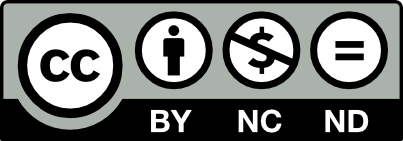Por favor, use este identificador para citar o enlazar este ítem:
http://hdl.handle.net/10609/102506
| Título : | Evolution of cognitive impairment after traumatic brain injury: is there improvement after controlling the practice effect? [supplementary material] |
| Otros títulos : | Evolución de las alteraciones cognitivas tras un traumatismo craneoencefálico: ¿hay mejoría tras controlar el efecto de la práctica? [material suplementario] |
| Autoría: | Lubrini, Genny Viejo-Sobera, Raquel Periañez Morales, José Antonio Cicuendez, Marta Castaño, Ana M. González Marqués, Javier Lagares, Alfonso Rios-Lago, Marcos |
| Otros: | Universitat Oberta de Catalunya (UOC) |
| Citación : | Lubrini, G., Viejo-Sobera, R., Periáñez, J.A., Cicuendez, M., Castaño, A.M., González-Marqués, J., Lagares, A. & Ríos-Lago, M. (2020). Evolución de las alteraciones cognitivas tras un traumatismo craneoencefálico: ¿hay mejoría tras controlar el efecto de la práctica?. Revista de Neurología, 70(2), 37-44. doi: 10.33588/rn.7002.2019233 |
| Resumen : | La importancia de conocer el patrón de evolución de los déficits cognitivos en los primeros meses tras un traumatismo craneoencefálico (TCE) ha fomentado el desarrollo de numerosos estudios longitudinales. Sin embargo, los resultados de la mayoría de ellos deberían tomarse con cautela debido a la falta de un control adecuado del efecto de la práctica, que puede llevar a sobreestimar la recuperación genuina de los procesos cognitivos. Describir los cambios cognitivos entre las fases aguda y subaguda del TCE controlando el efecto de la práctica. Veintidós pacientes realizaron dos evaluaciones neuropsicológicas tras el TCE (inmediata y tras seis meses) mediante los siguientes tests: Trail Making Test (A, B, B/A y B-A), test de Stroop (P, C, PC e interferencia), clave de números, búsqueda de símbolos, dígitos directos e inversos, fluidez verbal y memoria inmediata. Para controlar el efecto de la práctica se realizó una transformación de las puntuaciones aplicando el procedimiento propuesto por Calamia et al. Antes de controlar el efecto de la práctica, se evidenció una mejoría en las puntuaciones de todos los tests (p > 0,001). Sin embargo, tras él, la mejoría permaneció sólo en el Trail Making Test-B, B/A y B-A, la clave de números, la búsqueda de símbolos, el test de Stroop PC y los dígitos inversos. La falta de control del efecto de la práctica en estudios longitudinales puede generar interpretaciones erróneas sobre el perfil de evolución de los déficits cognitivos. El patrón de recuperación tras un TCE varía en función del proceso cognitivo. |
| Palabras clave : | rendimiento cognitivo diseño longitudinal evolución práctica recuperación memoria |
| Tipo de documento: | info:eu-repo/semantics/other |
| Licencia de publicación: | http://creativecommons.org/licenses/by-nc-nd/3.0/es/  |
| Aparece en las colecciones: | Articles Articles cientÍfics |
Ficheros en este ítem:
| Fichero | Descripción | Tamaño | Formato | |
|---|---|---|---|---|
| English_Lubrini et al 2019_Supplementary material.pdf | Supplementary material (english) | 123,25 kB | Adobe PDF |  Visualizar/Abrir |
| Lubrini et al 2019_Material suplementario.pdf | 18,57 kB | Adobe PDF |  Visualizar/Abrir |
Comparte:
 Google Scholar
Google Scholar
 Microsoft Academic
Microsoft Academic
Este ítem está sujeto a una licencia Creative Commons Licencia Creative Commons


